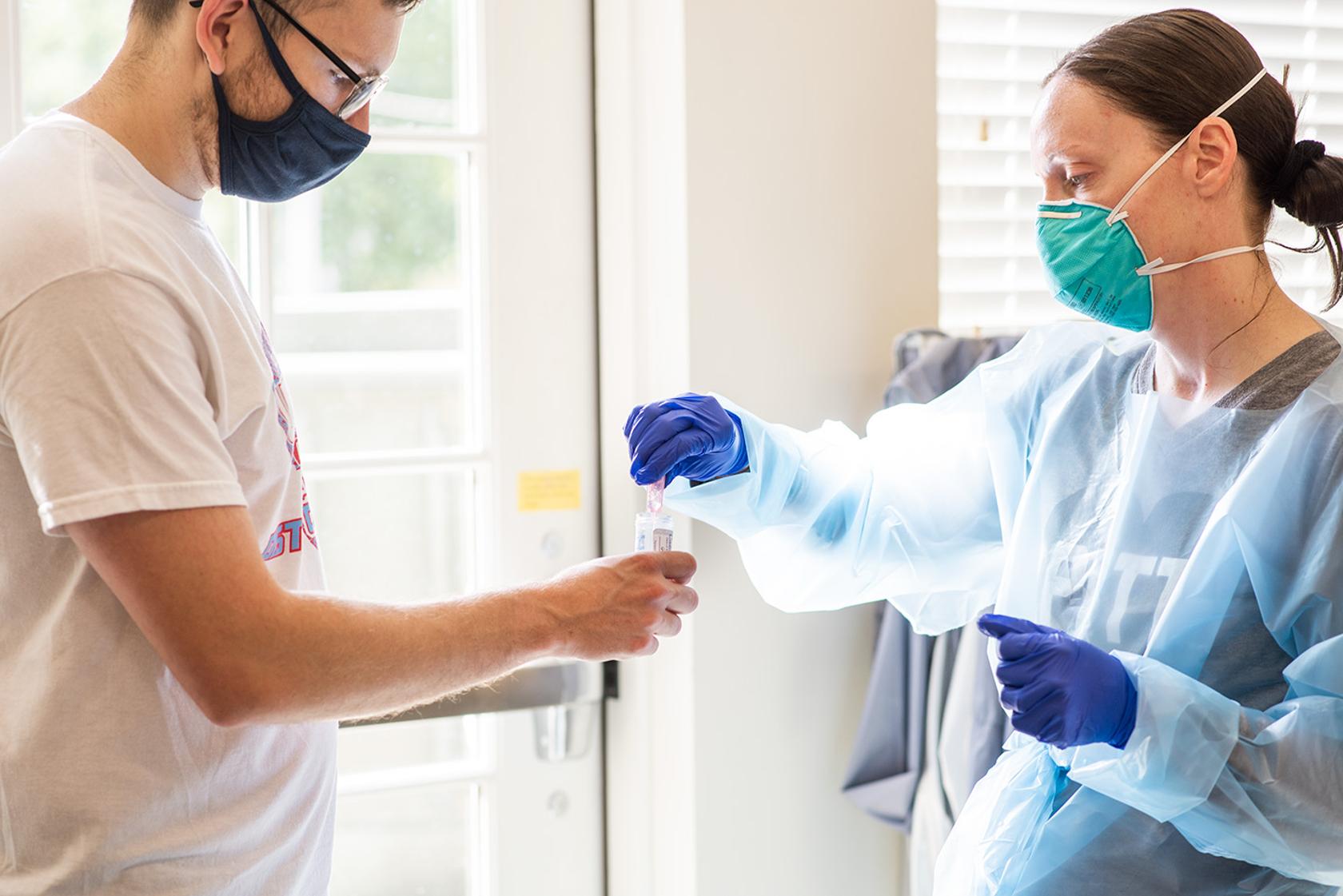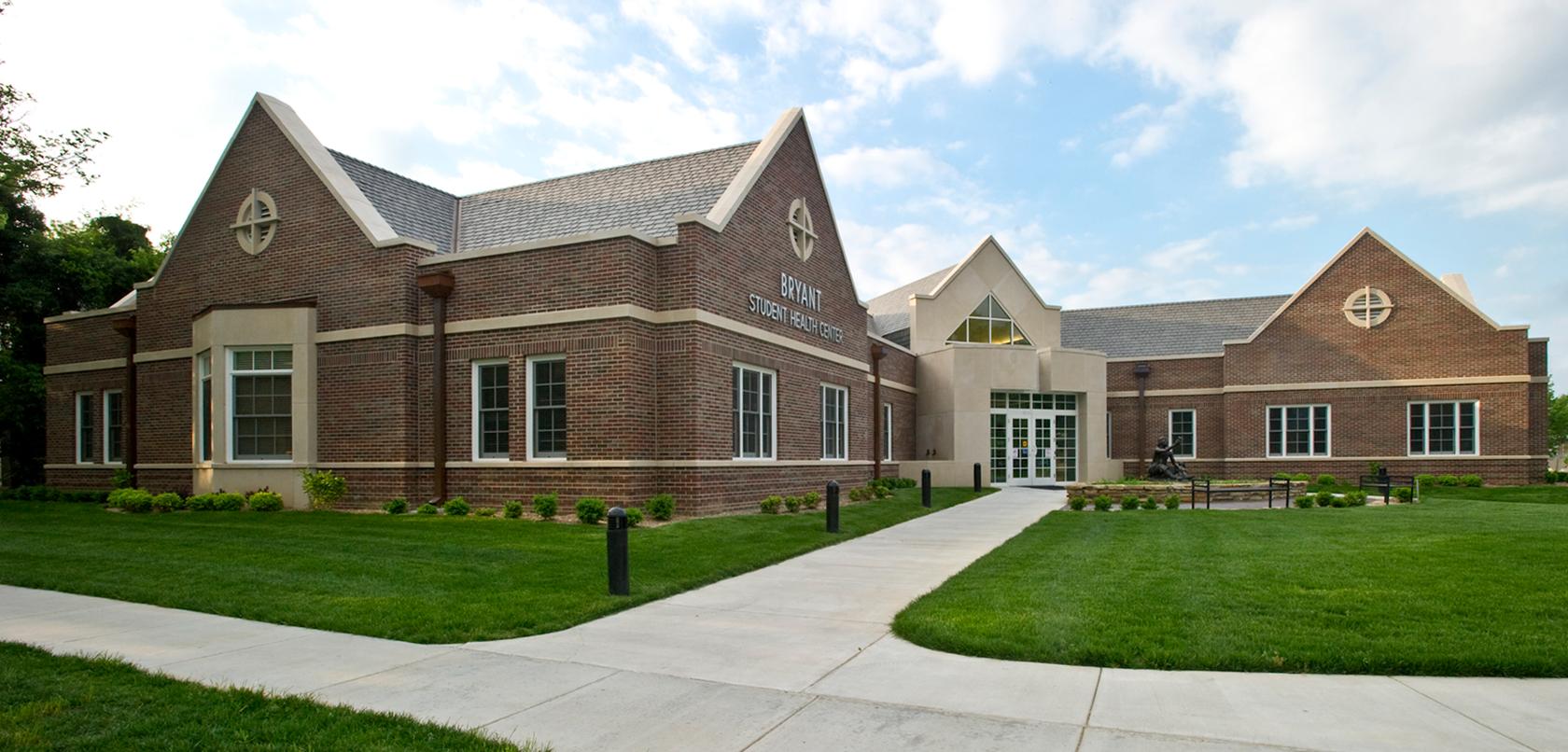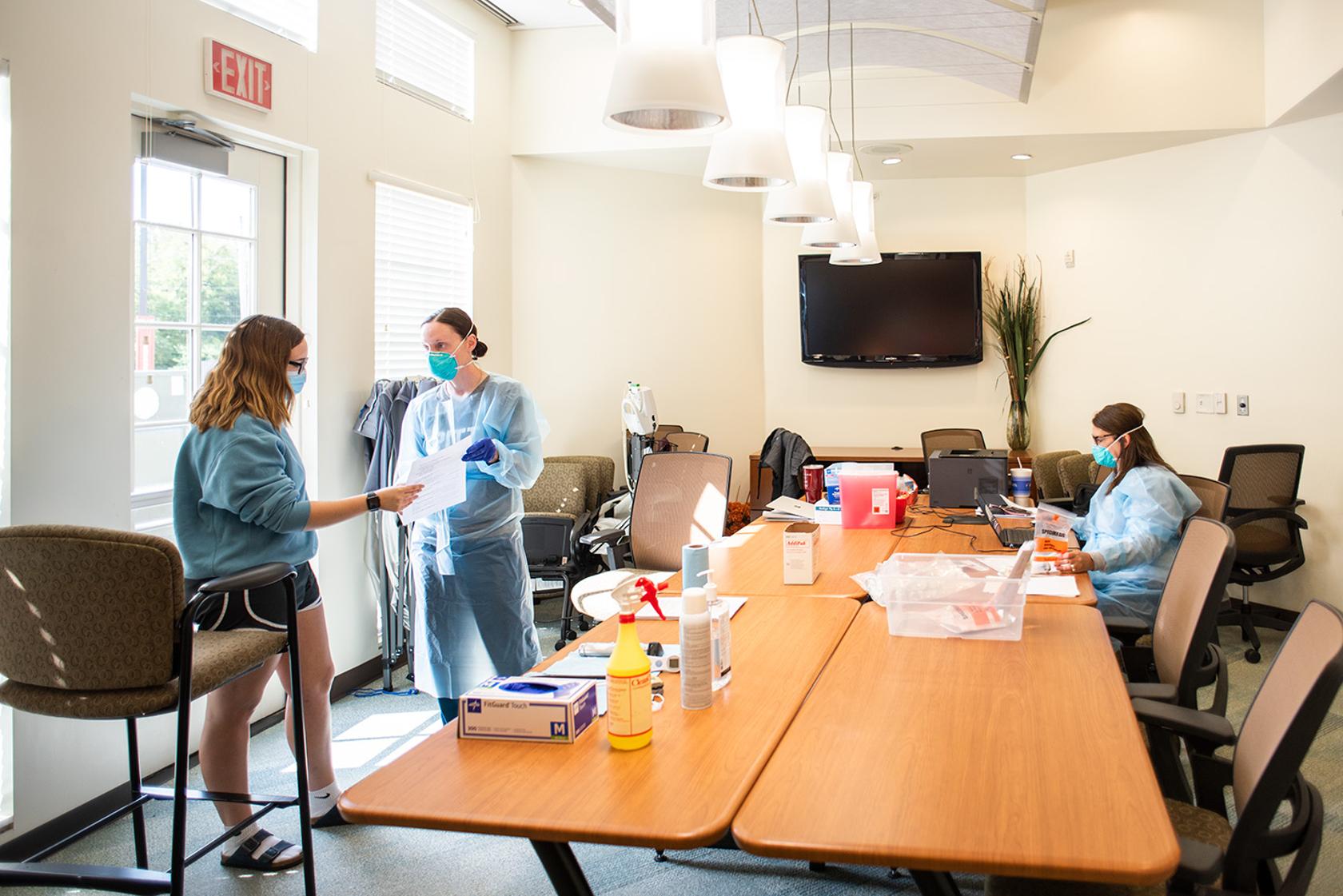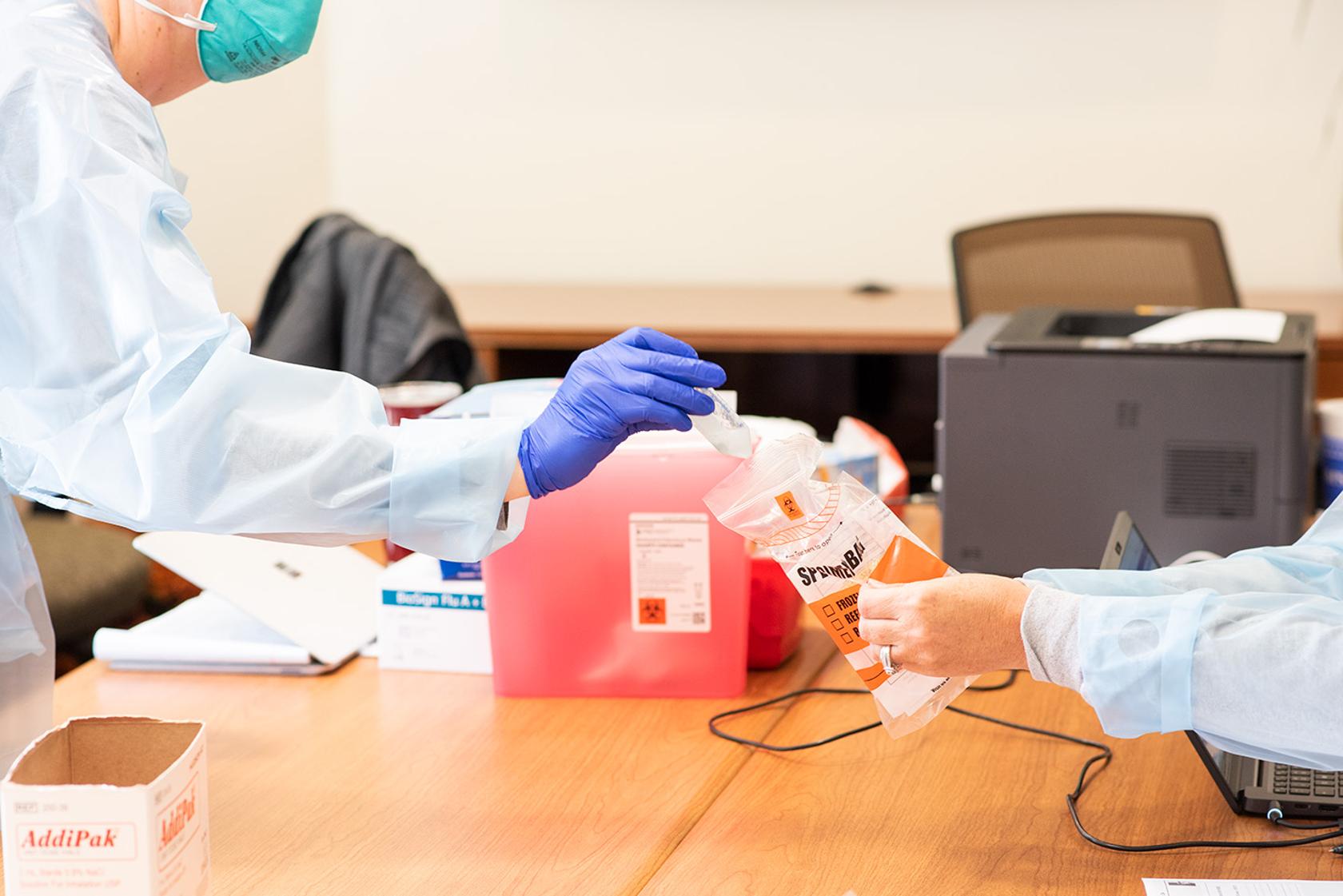PSU’s Student Health Center could be considered model during COVID-19
Wednesday, September 23, 2020 10:00 AM
News
Pittsburg, KS

In just over a month, it’s become a well-oiled machine.
And, some might say, a model.
Between Aug. 14 and Sept. 21, the Bryant Student Health Center tested 907 students, including those who were part of Move-In Day at Pittsburg State University’s residence halls, and additional students who presented with symptoms in the days after school began Aug. 17. The center has also monitored more than 1,000 students who rotated in and out of quarantine and isolation.
Along the way, staff and operations became streamlined and efficient.
Meeting needs
When the Bryant Student Health Center was dedicated just over a decade ago as a modern, tech-rich, robust medical facility for students, staff, and faculty, those at the ribbon cutting marveled over check-in kiosks that let health records be kept and accessed electronically and the new services, like cardiopulmonary testing, capability stress testing, pulmonary testing, a 24-hour heart monitor, and digital radiology technology.
It was funded through a student fee and numerous donors, one of whom asked that it be named after former PSU President Dr. Tom Bryant and his wife, Koeta. At the dedication, the couple noted that the facility would “meet students’ needs for years to come.”
They could not have foreseen the role it would play in a worldwide pandemic.
Today, center operations are directed by Rita Girth, with Dr. Kathleen Sandness as the medical director, and it’s staffed by three front desk receptionists, a finance manager, four nurses, three nurse practitioners, and four counseling staff.

Model center
In August, the health center added to its portfolio the status of being the only student health center at a Regent institution in Kansas that was solely responsible for the entry testing of students, and the only one participating in contact tracing.
It’s also the only student health center to have created the new position of COVID-19 Case Manager held by a person with a master’s degree in public health. Taylor Panczer and her colleagues at the center all earned COVID-19 contact tracing certification from John Hopkins University.
They also are collaborating daily — sometimes hourly — with the Crawford County Health Department, with whom they have a memorandum of understanding. They are part of a county-wide task force of health officials and providers who participate in a conference call at 8 a.m. every day.
“It's very unique that we have such a collaborative relationship; that isn't happening everywhere,” Girth said. “When I talk to people outside of our county, they’re all jealous of what we have in the way of a partnership in Pittsburg, Kansas. I guarantee you no one else has the cell phone numbers of the public health officers like Taylor does.”
Panczer carries a burner phone at all times so that students, staff, or faculty in quarantine have access to her. Health care providers at the center carry burner phones for those who are in isolation.
How it works
The center operates its COVID-19 testing clinic with precision from an out-of-the-way conference room separate from where patients with other, non-COVID-19 health concerns are seen — also a unique approach, Girth said.
“We don’t take walk-ins, we ask people to call before they come, and after they check in at the front desk they are directed here so they have minimal contact,” Girth said.
The health center uses saliva tests to check for the virus. Each patient is given a vial which they take outdoors to collect spit in, reducing the close proximity of staff and thus reducing the amount of costly PPE needed.
Results are very sensitive and specific.
“The problem with rapid tests, which we opted to not do, is that a positive is a positive but a negative might not be a negative,” Girth said. “With this, which is a PCR molecular test, results are highly accurate and the turn-around time is 24 hours or less.”
A courier picks up samples to take to Cytocheck, a lab in Parsons, Kansas, just 40 minutes away.
“Yesterday, we sent tests at 4 p.m. and this morning our staff were notifying people of their results by 8 a.m.,” Girth said. “We are very pleased with that kind of turnaround time.”

Labor intensive
Keeping track of those who test positive is labor intensive.
“We personally notify each person, we send them a packet of information, we do documentation, we forward it to the county health department, and we add it to a spreadsheet so the Student Life division is aware,” Girth said.
At one point, staff did a daily phone call with students in isolation until the number reached 40 and it became unmanageable. Staff learned to change operations to let students contact them — including by text, if preferred — on an as-needed basis.
Panczer feels the pull: she wears the hat of counselor, the person who has answers to frequently asked questions, the one who helps students who need assistance with alternative housing and food plans while in quarantine and isolation, the one who helps put parents at ease, and more.
“I try to be a one-stop shop,” she said, “to lessen the number of different departments and people each person we serve has to talk to at a time when they’re in crisis.”
Numbers are trending down, but in late August and early September, there were as many as 600 in quarantine and 101 in isolation, meaning staff were putting in long hours and weekends.
It’s also labor-intensive, Sandness noted, to field inquiries from many of the 1,000 faculty and staff employed by PSU and the approximately 6,500 students enrolled.

Athletics
Assisted by Athletic Trainer Phil Carr, Dr. Sandness and her staff also closely monitoring PSU athletes who have tested positive. After isolation, Sandness and her staff give EKG tests to each. Sandness evaluates and must clear each athlete before they’re allowed to return to practice and, ultimately, to play.
“They’re put them on a graduated return-to-play that takes 14 days,” Sandness said. “Nationally, we’re seeing in younger patients that they sometimes are seeing symptoms three months later, and that includes myocarditis, so there's a great deal of caution when it comes to putting them back on the field.”
“The university is being a good steward when it comes to their students and student-athletes,” Sandness said. “And at the end of the day, I think we can be proud of what we’ve done here at the Bryant Student Health Center. Really proud.”